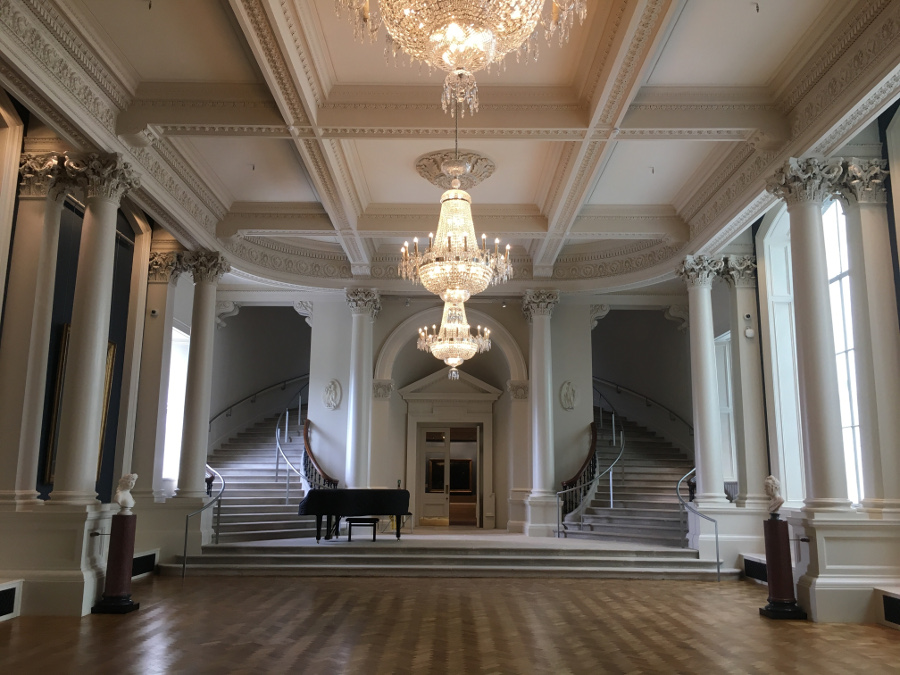The National Gallery of Ireland has boasted an impressive programme of events this year, most notably presenting the work of the universally renowned Caravaggio and Vermeer, not to mention its grand reopening in June, featuring new rooms, an updated layout and a display of new acquisitions providing visitors with hours of entertainment. With this in mind, the inconspicuous Print Gallery, which lies somewhat off the beaten track, is easily overshadowed. However, this unassuming space is currently playing host to the quietly dazzling work of German artist Käthe Kollwitz. The title, Life, Death and War doesn’t exactly present itself as a cheerful Sunday afternoon activity, yet this carefully curated selection of 40 prints and drawings proved to be one of the most fascinating exhibitions I have visited this year by far.
Although enjoying success during her own lifetime, Kollwitz seems to have been largely forgotten in the popular narrative of art history, possibly influenced by her opposition to the Nazi regime, which stripped her of the right to publicly display her work in her later life. Working in a world dominated by men and driven by a desire to highlight social injustice, Kollwitz carved a unique aesthetic and artistic identity that focused on highlighting the suffering of humanity, a persistent theme throughout her oeuvre. The death of her son during World War I was hugely impacting, and she wrestled with loss and mourning throughout her career.
Kollwitz can be described as an artist who was both deeply rooted in tradition while simultaneously breaking away from artistic norms in terms of style and subject matter. Her techniques were largely orthodox in their approach but the end result was completely original, presenting powerful new images on dark, often harrowing, themes. Her extensive artistic training is evident immediately upon entering the gallery, with a small series of studies and self portraits that boast exceptional technical prowess and a skilled observation of the human condition. The range of media in the first room alone – pen, ink, chalk and lithograph – was just a fraction of what was to come. The drawings are delicate and give no hint of the overwhelming darkness that is present in her later works.
As the exhibition progresses, we begin to see Kollwitz tackling more difficult subject matter, notably in two print cycles surrounding the themes of peasants and war. A collection of etchings entitled “The Peasants War” is particularly striking, as the images retain the delicacy of her drawings, giving them a sense of fragility which contrasts with the harsh nature of the scenes themselves. The prints are beautiful but harrowing, and, in a way, can be difficult to look at. “Raped” is a particularly thought provoking image, as Kollwitz conveys such a violent act in an image of complete stillness. A riot of vegetation conceals a woman’s body, skin exposed, her vulnerability only heightened by the ominous black background, the beauty of nature juxtaposing with the preceding atrocity.
In other etchings, such as “Whetting the Scythe”, the detail is absolutely astonishing and her attention to emotion is unfaltering. Opposite hangs a series of woodblock prints centered on the theme of war that could not be further removed in style from the previous etchings. The prints are highly graphic and stylised, reminiscent in a way of the work of Edvard Munch, yet still manage to convincingly portray the abstract notions of grief and loss. Both of these series feature a number of more sensationalised group scenes which are magnificent in themselves. However, Kollwitz’s power truly lies with her more intimate, individual and small group images. Her later depictions of death are some of the most haunting in the exhibition. Two images in particular that show mothers being dragged away from their children by a skeletal figure are particularly chilling.
Through her devotion to highlighting humanity’s suffering, thus bringing about real social change through her artwork, Kollwitz created a vast body of highly powerful work. Her subjects were relatable to contemporary audiences, yet still retain their ability to move modern viewers as they are steeped in personal emotion, a key component in her ability to create such potent images of human struggle.







